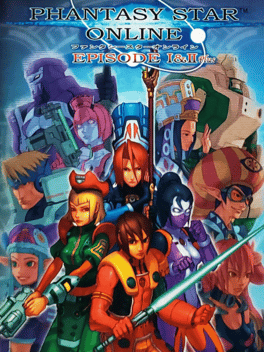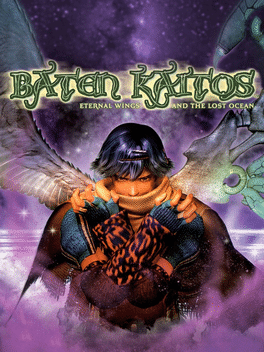New Ngc Games - Page 9
-
Amazing Island
2004
Amazing Island
2004
star 5.5The 'black evil' has taken over the island, and the Maboo Tribe have called upon you to bring order and outcast the evil that has taken control. To do so, you must create your own creature and train it up, entering it into various competitions against the 'black evil' and working towards the main goal. As the competitions are completed, you will unlock new features to improve your own creature in speed, strength and general looks. The main reason to do so are the mini games which the monsters can participate in. While those rely on your active gamepad skills (mostly pressing a button as fast as possible with minor variations), the changes of success are dictated by the monster's statistics. So for example a dragon would be beneficial for a flying mini game. Those statistics can be further enhanced with items bought at shops. Play single and multiplayer battles on the GameCube, or upload your creatures to the Game Boy Advance, taking them on the road to challenge your friends and unlocking unique items and feature -
Phantasy Star Online Episode I & II Plus
2003
star 8.2SEGA re-released in 2003 an updated version of Phantasy Star Online Episode I & II for the Nintendo GameCube in 2003 called Phantasy Star Online Episode I & II Plus. Early in the effort to run unsigned code on the GameCube, people found that when playing PSO and connecting to a server using the GameCube Broadband Adapter, a regular PC could be made to pretend it was a server which would fool the game. After making the connection, data could be streamed back to the GameCube, making it easy for hacking and false servers. Phantasy Star Online Episode I & II Plus was created in mind to fix this problem. Along with this problem, SEGA included extra content for offline with this game including: - Episode II Challenge Mode, which was perviously only online. - Perviously Online only quests, Seat of the Heart, West Tower and East Tower are now available offline. - Central Dome Fire Swirl, a downloadable quest for the Xbox, is now available offline. - The downloadable goods from Fake in Yellow quest are now available offli -
Duel Masters: Netto! Battle Arena
2003
Duel Masters: Nettou! Battle Arena is the first game of the Duel Masters Console Games series. The game follows the same story plot as Season 1 of the Duel Masters anime. The number of cards in your hand, deck and graveyard are always visible. The game displays cinematics for creatures and spells as well as various CG effects during Gameplay. The gameplay speed can be increased, resulting in fast-paced games. Cards with a Super Rare rarity are given a slight foil effect. Your hand isn't always visible and must be viewed from the bar on the top portion of the screen. -
Donkey Konga
2003
Donkey Konga
2003
star 6.5Donkey Konga is a GameCube rhythm video game starring the ape Donkey Kong, developed by Namco and published by Nintendo. Instead of the standard GameCube controllers, the game is intended to be played with a special controller called the DK Bongos that resemble two small bongo drums. Donkey Konga was developed by the same team of people who made the Taiko: Drum Master series for the PlayStation 2. The tracks include hits such as "Louie Louie", "We Will Rock You", "Shining Star", "Rock Lobster" and "Losing My Religion". There are tracks from the Mario series, the The Legend of Zelda series and other Nintendo related music. All regional variants of the game have differing track listings, and in the North American version of both games, almost all of the licensed non-Nintendo/traditional songs are shortened covers. -
Baten Kaitos: Eternal Wings and the Lost Ocean
2003
star 8.3An original roleplaying game for Nintendo GameCube from the team behind Xenosaga. The game makes heavy use of cards for everything from fighting battles to purchasing items. Cards are actually a central part of the story as well, as they are holders for "Magnus" which is short for "Magna Essence." Magnus is the true nature of all things throughout the world, including swords, magic spells and even apples that are gathered in the town in which your adventures start out. A real item can be turned into Magnus form and stored in a blank card. It can then be taken out from the card and will turn back into real form. Features detailed CG cutscenes to tell the story and turn-based battle sequences. -
Naruto: Clash of Ninja 2
2003
star 6.2Naruto: Clash of Ninja 2 offers several different game modes such as Arcade mode, VS mode, and Story mode. You can unlock new features such as new characters, stages, and modes by accomplishing certain tasks in the game. -
Disney's Hide and Sneak
2003
star 3.6Either Mickey or Minnie will get kidnapped by a strange flying alien mushroom - depending on who the players chooses to control. Now the other character has to undertake a rescue mission. Gameplay includes climbing, solving puzzles, jumping, evading and hiding from enemies. Enemies can be taken out when sneaking close enough to enemies. As you make progress you traverse three game areas. These are a warehouse, museum and ruins. -
Pac-Man Vs.
2003
Pac-Man Vs.
2003
star 6.4Pac-Man Vs. is a Pac-Man video game originally designed exclusively for the Nintendo GameCube that was included as an extra bonus disc with the Player's Choice edition of Pac-Man World 2. -
Pac-Man vs. & Pac-Man World 2
2003
Pac-Man vs & Pac-Man World 2 is a bundle release containing both the video games Pac-Man vs and Pac-Man World 2. -
Pokémon Channel
2003
-
Medabots Infinity
2003
Medabots Infinity
2003
star 5Medabots Infinity is a role-playing video game published in 2003 by Natsume, and developed by Victor Interactive. The game is based on the Medabots series. Hooking up to the Metabee and Rokusho Game Boy Advance games allows for secret unlockable medabots: Arcbeetle (Metabee) and Mega-Emperor (Rokusho). Several characters from the anime make appearances -
1080° Avalanche
2003
1080° Avalanche
2003
star 6.81080° Avalanche is a sequel to 1080° Snowboarding for the Nintendo 64. The game has an emphasis on racing, rather than doing tricks, in contrast to other popular snowboarding games. -
Phantasy Star Online Episode III: C.A.R.D. Revolution
2003
star 7.4A turn-based online RPG for the Nintendo GameCube. Set in the Phantasy Star Online universe, join the Hero or Dark side using cards featuring weapons or creatures from Phantasy Star Online Episodes I and II. -
Gotcha Force
2003
Gotcha Force
2003
star 7.9Gotcha Force is a fighting / third-person shooter video game developed on HAL Laboratory Sysdolphin engine and published by Capcom for the GameCube in 2003. The game consists primarily of collecting gacha toys and battling with them. -
Yoyaku Tokuten: Pokémon Colosseum Kakuchou Disc
2003
The Bonus Disc contains two options: Poké Coupon Title, which allows Pikachu and other rewards to be obtained, and Relic Stone, which allows Celebi to be obtained. Unlike the US Bonus Disc, owning (a Japanese version of) Pokémon Colosseum is required at first to receive any gifts. -
Pokémon Colosseum
2003
Pokémon Colosseum
2003
star 7.1Pokemon fans can now battle their favorite Pokemon on the grand stage. Starring a brand new leading character, Pokemon, Colosseum offers a story mode that pits you against tough trainers who routinely catch damaged Pokemon. In Battle mode, you can use the Game Boy Advance cable to send your team from your Pokemon Ruby or Pokemon Sapphire Game Pak to your Gamecube, then witness the true potential of your team. Rescue Pokemon and watch them come to life in spectacular Colosseum battles. -
Tonka: Rescue Patrol
2003
Tonka: Rescue Patrol
2003
star 4.3Be the hero of the town as you patrol its streets and lend a hand in Tonka rescue and construction vehicles. In customizable cars, trucks, and helicopters, you'll explore five different environments that expand as you play. You can customize your vehicles to suit your style of play and perform jumps and other stunts on the free-roaming landscape. Tonka Rescue Patrol features realistic rescue missions with Tonka Joe as your guide. -
Go! Go! Hypergrind
2003
Go! Go! Hypergrind
2003
star 3.6Go! Go! Hypergrind is a skateboarding video game for the Nintendo GameCube that was developed by Poponchi and published by Atlus Co. Animation studio Spümcø of Ren & Stimpy fame contributed character designs and animations to the game. -
Mario Party 5
2003
Mario Party 5
2003
star 6Help Mario and his friends restore peace to Dream World while racing around all-new game boards and finding new surprises. -
The Legend of Zelda: Collector's Edition
2003
star 8.3Receive Four Complete Classic Zelda games all on one disc when you buy the Zelda GameCube Bundle: The Legend of Zelda, Zelda II - The adventure of Link, The Legend of Zelda: Ocarina of Time, The Legend of Zelda: Majora's Mask. The disc also includes: Playable Demo of the Legend of Zelda: The Wind Waker, Zelda Retrospective Movie, The Legend of Zelda: The Wind Waker Movie Preview.


















